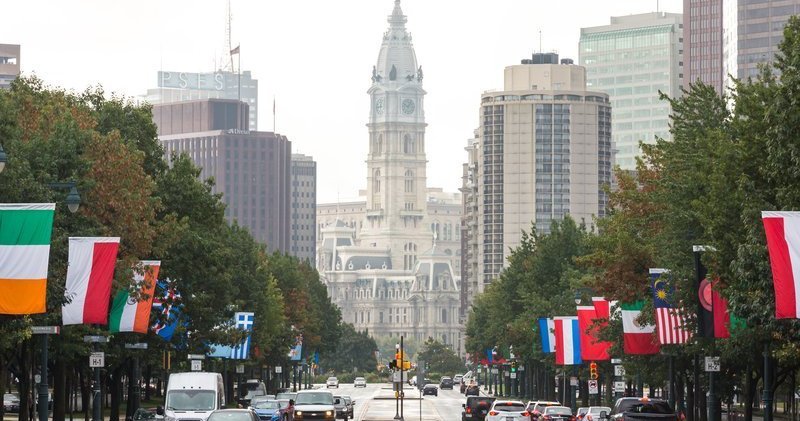The Philadelphia region’s immigrant population has increased over the last decade, spurring economic growth and social prosperity, a new report says.
The report from The Welcoming Center says this influx of immigrants has allowed the region to stave off population decline and coincided with increases in household income and educational attainments, and a decrease in poverty.
MORE: City Council approves additional hiring protections for jobseekers with criminal records
The report, which covers Philadelphia and its four collar counties, concluded that immigration contributes positively to the region’s economy and the well-being of the population, but that opportunity gaps still exist for foreign-born people.
Anuj Gupta, president of The Welcoming Center, a Philly organization that promotes economic opportunities for immigrants, said he hopes the report’s findings can reshape the way people view immigration in the region and inform thoughtful policies.
“What we’re seeing is the story of collective prosperity while immigration has accelerated in the region, which kind of defies everything that’s being said about immigration right now,” Gupta said.
“In the suburbs, there is an opportunity deficit that’s not being met. There are immigrants that are highly skilled, highly trained, possibly with bachelor’s or graduate-level education that are underemployed.”
For Gupta, who grew up in the Philadelphia suburbs, one of the most surprising regional trends was the decline of native-born populations against steadily increasing foreign-born populations.
Philadelphia’s foreign-born population rate grew from 12.69% in 2013 to 15.09% in 2023, the report shows, citing U.S. Census Bureau data. Similarly, the foreign-born population rate in the suburban counties grew from 9.09% to 10.66%. This growth allowed the region’s population to marginally grow over that same span despite native populations declining due to lower birth rates and moving elsewhere, the report says.
Additionally, as the native population has grown older, immigrants have made up a larger percentage of the region’s working-age population — those ages 25-54. The percentage of foreign-born workers in the region rose slightly from 2013 to 2023 as the percentage of native-born workers fell by 2 percentage points, the report shows.
“If not for the relatively recent uptick in immigration to all four of the collar counties, you would be talking about a region in decline, population loss and bigger workforce gaps than we already have,” Gupta said.
The report also shows that the region’s poverty rate has fallen as median household incomes and educational attainment levels have risen.
The average median incomes of foreign-born households surpassed that of native-born households in 2022. As of 2023, the average median income of foreign-born households was $101,321, slightly above the $99,114 made by native-born households, the report shows.
In Philadelphia, the poverty rates for foreign-born and native populations each decreased by about 4 percentage points from 2013 to 2023. The poverty rates in the suburbs fell slightly, but immigrants remain more likely to be impoverished — a deficit that Gupta said speaks to a “fundamental lack of understanding” of the economic opportunities that immigrants can provide.
“While immigrants are spread across a wide range of industries, they are also often working in jobs that do not fully match their skills and qualifications and highlights the need for policies that better match skills with opportunity,” the report reads. “Addressing these gaps is critical to fully leveraging the skills and supporting community resilience.”
The report shows that the region’s foreign-born population has long been more likely to hold at least a bachelor’s degree, though that gap has narrowed in recent years.
As the federal government cracks down on immigration, Gupta said he hopes the report’s data can be used for productive dialogue at the local level.
“We put the real information out, so if people want to make policy choices that still run contrary to the contributions that immigrants are making … it will not just damage individuals and families and our social fabric, but our economy,” he said. “I do believe that at the local level we can change the direction of thinking and discussion.”
